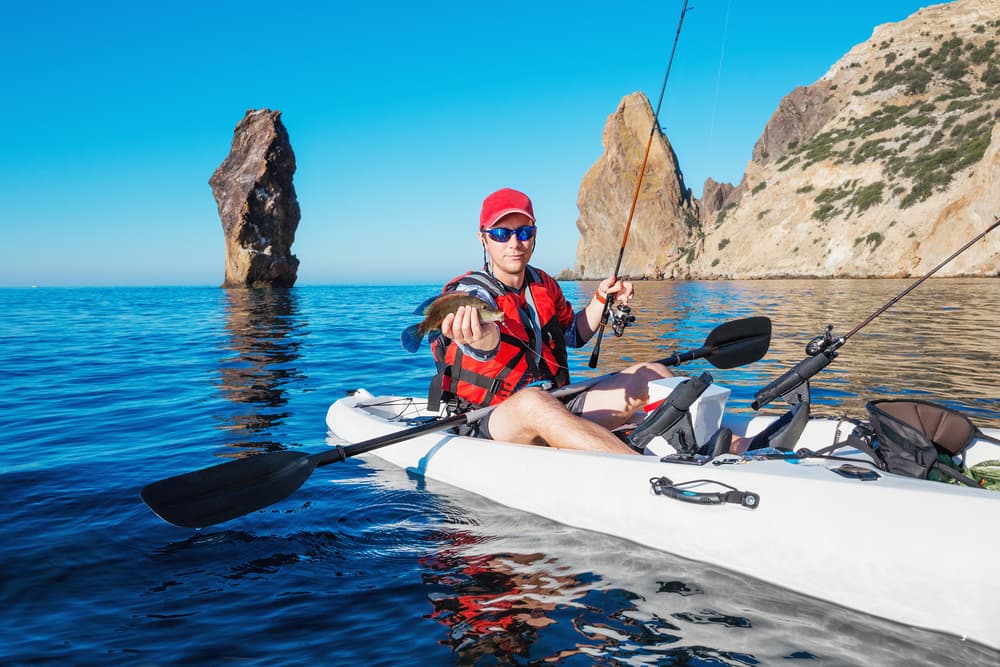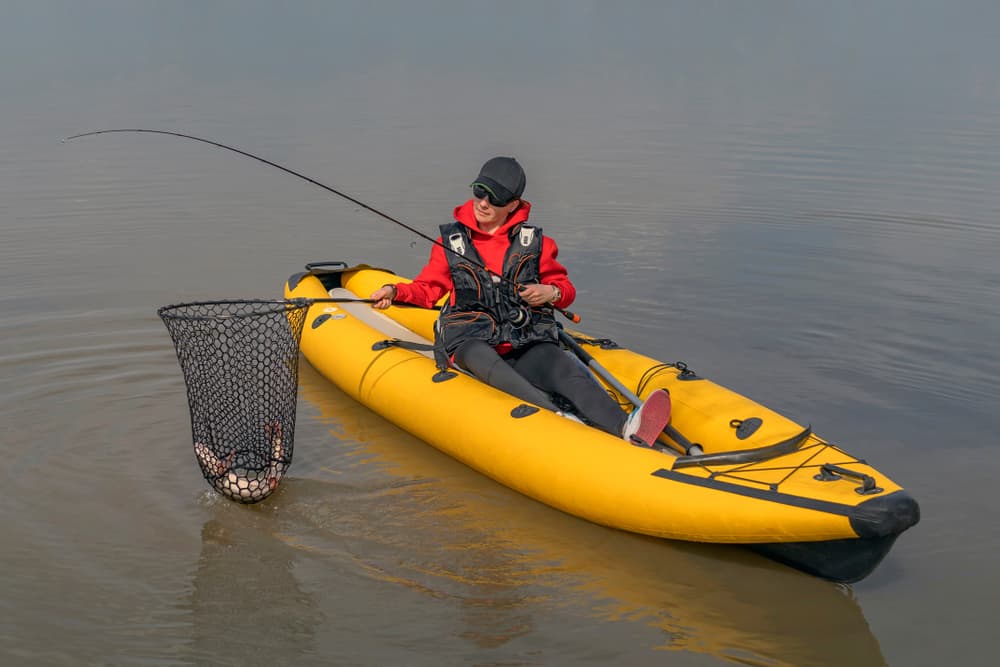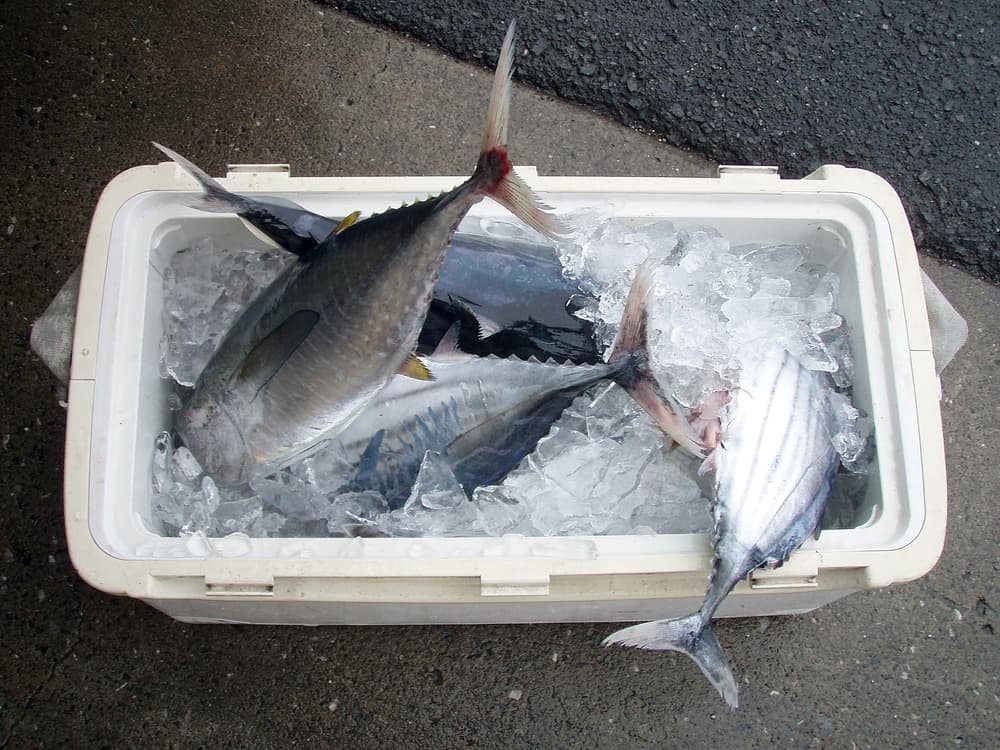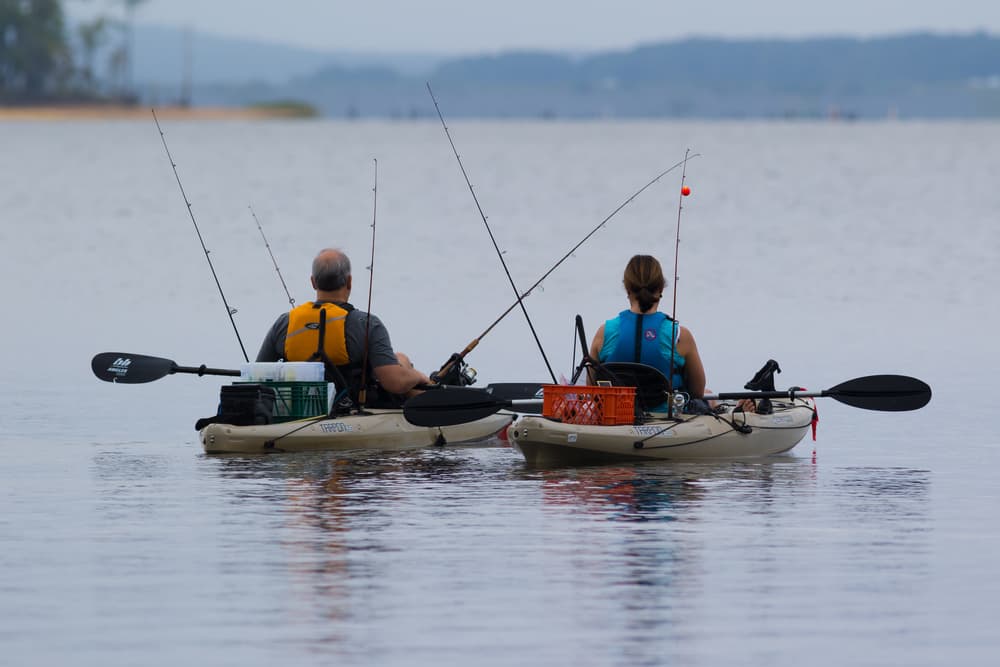A Beginners Guide To Kayak Fishing: Safety Tips And Recommendations

Kayak fishing is one of the most intimate and adventurous ways to hook a fish. This sport allows you access to shallow areas and it makes drifting and anchoring in tricky areas a breeze. It also has a certain Hemingway quality, conjuring up memories of “The Old Man And The Sea” each time you cast a line out, never knowing if a giant fish will give you the fight of your life. But while kayak fishing is a wild and romantic allure, there is a lot of practical planning that must occur if you want to enjoy it.
As a kayak fishing beginner, you must purchase the right size and shaped kayak for fishing. Then you need to ensure you style it out with all the right fishing accessories and have them all within a quick grasp. Most importantly, you need to bring all the right safety get and take all necessary steps to ensure your trip will be as safe as possible.
There is no right or wrong way to fish from your kayak. In fact, depending on where you plan on fishing, in a river, lake, or open ocean, your method is likely to vary significantly. Still, there are some tips, tricks, and accessories every beginner should know before his or her first kayak fishing trip. These safety tips, accessory recommendations, and top kayak fishing tips will all help prepare you to land some great fish as you embark on the thrilling adventure of kayak fishing.
Kayak Fishing Accessory Recommendations
Every paddler and angler has different likes and dislikes. This also translates to every person desiring a different kayak fishing setup, and even different types of fishing kayaks. But while there is plenty of room for variation, below is a list of items that nearly every angler needs to pack on a kayak fishing trip.
Proper Rod, Rod Holder Gear, And Tackle
You can’t catch a fish without a pole and proper gear. Bring a pole suitable for the type of fishing you plan to do. Do your best to buy a pole that is versatile, and not too large. A great kayak fishing pole should be capable of catching small to larger fish, but not measure longer than the boat, ideally. Make sure you choose the right rod holder for your kayak as well.
Bring prepared tackle for easy replacements. The last thing you want to do is a complicated knot and navigate small hook loops while your kayak rocks in the waves.
Fishing Net
A fishing net is important in most fishing situations. It is imperative when it comes to kayak fishing, as bringing a fish on board without a proper fishing net is difficult and even dangerous.
Make sure you have an easy-to-grip net with a shorter handle. Longer handles can be more difficult to use, especially with large fish. So a three-foot length or shorter is usually suitable in most circumstances.

Easy To Access Tackle Box
Bring a tackle box that is easy to open and close. Try to bring something compact that you can use with one hand if necessary. Sure, you want to have every piece of tackle available, but less is more when it comes to packing for a kayak fishing trip.
Measuring Tape Or Ruler
These days nearly every fish, or most of the desirable ones anyway, has to be a certain length in order to keep and consume. This is why a measuring tool is so critical. You can bring along a ruler, attach one to the hull of the boat, or buy a cooler with a ruler on it. Either way make sure it is right near your seat, so you can access it once you have a fish on board.
Grips And Pliers
Once you get a fish on board you want to make the unhooking process as easy as possible. Unhooking a fish, especially a lively one with sharp teeth or fins, can be a challenge even on firm land. Unhooking a fish in a kayak seat is quite a challenge, so make sure you have fish grips and pliers to assist. This helps reduce the chance of you getting hurt in any way, and also helps reduce harm to the fish.
Cooler With Ice
If you plan on keeping your catch, you’ll need a cooler. You can stock it with a few food items, and once you eat the food, fill it with fish - at least that’s the goal. A cooler will keep your catch fresh and safe to eat, especially when you are spending a long day fishing in the sun.

Anchor
Sometimes you might find drifting or trolling works best for kayak fishing, but you should always have an anchor. Anchoring allows you to fish in a particularly good spot without drifting with the current.
Having an anchor also helps prevent a larger fish from pulling you somewhere you don’t want to go. There are also likely to be times you need to regroup or bait a hook, and you might want to be anchored down at these times for safety reasons.
Safety Gear
Perhaps most importantly, you need to pack all the necessary safety gear when kayak fishing. Safety is important any time you get in a kayak. When you add fishing to the mix it becomes even more essential. In the next section, we will highlight some key safety gear you should always bring on a kayak fishing trip.
Six Safety Essentials For Kayak Fishing
1. Always Wear Your PFD
You should always wear a PFD when kayaking. But when it comes to kayak fishing, this is even more essential. Simply put, there are more variables and risks involved when it comes to kayak fishing than normal pleasure cruising on a kayak.
You can opt for a kayak designed for kayak fishing or a comfortable PDF of your choice. Just make sure you choose a PFD that is comfortable to wear and easy to move in. You need all the maneuverability possible in your kayak seat - so purchase accordingly.

2. A Reliable Knife
Either packed in your pants pocket or in your PFD pocket, you should have a knife. This knife can be a multipurpose tool or just a great reliable knife. This will help untangle you, cut lines when necessary, and get you out of other tricky situations in a flash.
3. GPS And A Cell Phone
You should have a reliable navigation system and a phone for emergencies. Keep your phone around your neck in a waterproof cell phone case. The GPS will come in handy when you are drifting, or simply confuse your direction while reeling in a fish.
4. Dry Bag With First Aid
A dry bag with first aid supplies is also clutch when kayak fishing. Fishing often results in small scratches or little scrapes here and there. So make sure you have bandages and disinfectants standing by to avoid bleeding too much or potential infections.
5. Light And Reflectors
Sometimes your kayak heads in directions you weren’t anticipating when you are fishing. Make sure boats around you can see you. This is where light and reflectors come in handy. This way boats can see you, even if you are temporarily distracted by a fish.
6. Manual Bilge Bilge Pump
Bring a manual bilge pump on any fishing trip. Water in your kayak tends to happen when fishing. But taking on too much water can be dangerous, and this can happen easily when battling strong fish. A bilge pump makes it easy to get rid of access water with minimal effort.
10 Tips For Kayak Fishing Beginners
1. Select The Right Kayak
While you can fish from most boats, there are certain kayaks that are much better for kayak fishing than others. So if you are starting from scratch, and don’t have a kayak in mind, consider some features you should look for in the perfect fishing kayak. There are many types of fishing kayaks to choose from.
Consider your size first, as this will affect the comfort and balance of the boat. You want a kayak that is comfortable to sit in and stable enough to stand in when necessary. So balance and size are crucial. You also want to ensure you have a boat with enough storage capacity to fit your essential accessories.
2. Make Your Kayak Comfortable
You want to fit your kayak so it is as comfortable and organized as possible. Therefore, choose a seat and setup that won’t cramp you up or cause stress on your body. The more comfortable you are, the longer you will want to stay out hunting for the perfect catch.
3. Go With Other Kayakers On Your First Few Trips
One of the best ways to become better at kayaking fishing as a beginner is to go fishing with those who have experience. There are all sorts of kayak fishing forums, online groups, and in-person meetups.
This is a great way to make some friends and learn lots of ins and outs of kayaking in your region. You will have someone to ask questions whenever they arise and someone to guide you as you make some inevitable mistakes.
4. Bring The Right Accessories
Make sure you are packed and ready to go before you head out on your kayaking trip. Sure, you can just pack a pole and lower and hope for the best - but that is not likely to end well. Look over our accessories list above and make sure you have all you need to have a great time fishing on your kayak.
5. Have Everything You Need Within Reach
In addition to packing everything, you also want to make sure everything is functional and within reach, For example, your knife won’t be of much help if it is packed in your dry bag in the storage compartment. Take your time situating your gear and make adjustments in real-time as you slowly find the perfect setup.
6. Know The Weather, Tides, And Currents
The weather, currents, and tides are always crucial to know in detail when you venture out in a kayak. When you are fishing this becomes even more important. Kayak fishing often involves drifting with currents and going into tricky and unanticipated spots. Knowing the currents, tides and weather will keep you more in control and out of any particularly dangerous places and positions.
7. Know What You Are Fishing For
It is also helpful to know exactly what you are fishing for. This means knowing not only what you want to catch, but also what you potentially could catch. This will allow you to have the right tackle and setup. It will also help you avoid any scary surprises. If you know you might catch a sharp-tooth fish, you can have all the right gear to handle such fish.
8. Get Your Paddling Strokes Down
Before you fish on your kayak, you first need to know how to navigate and paddle your fishing kayak. This might sound obvious, but it cannot be stressed enough that in order to be a good kayak angler, you must first be a competent paddler. Make sure you know how to paddle at a nice cadence to troll - usually about 2.5 miles per hour.
Also, practice positioning strokes that will allow you to align yourself easily. The more comfortable you are paddling, then the easier it will be to then fish from the kayak.
9. Don’t Be Afraid Of Trial And Error
It shouldn’t come as a shock to you that you are unlikely to be an amazing kayak angler on your first try. There are all sorts of variables involved. There are new skills that will require practice and muscle memory. So don’t be afraid to fail.
Instead, make sure you go out with safety as your primary focus and have very low expectations as far as catching fish on your first few trips. Know that you will make some mistakes here and there and that over time you will learn and grow very comfortable kayaking and fishing at the same time.
10. Ask Local Experts For Fishing Tips
One way to help skip some of the trial and error is to get a little bit of friendly expert advice. Ask some local experts - fishermen, paddlers, and kayak anglers alike. Any localized advice is bound to be helpful, especially on your first few kayak fishing attempts.
Related Articles
Inflatable SUPs (standup paddleboards) already have pretty lofty goals – offer much of the look,…
Learning a new sport as an adult can be an intimidating thing. Take skating as an example... There's…
Bass Pro’s Spring Fishing Classic sales event is here! Refresh your gear for the start of the spring…
From inflatables to hard boards, the gamut of All-Around Paddle Boards being offered in 2023 is…



